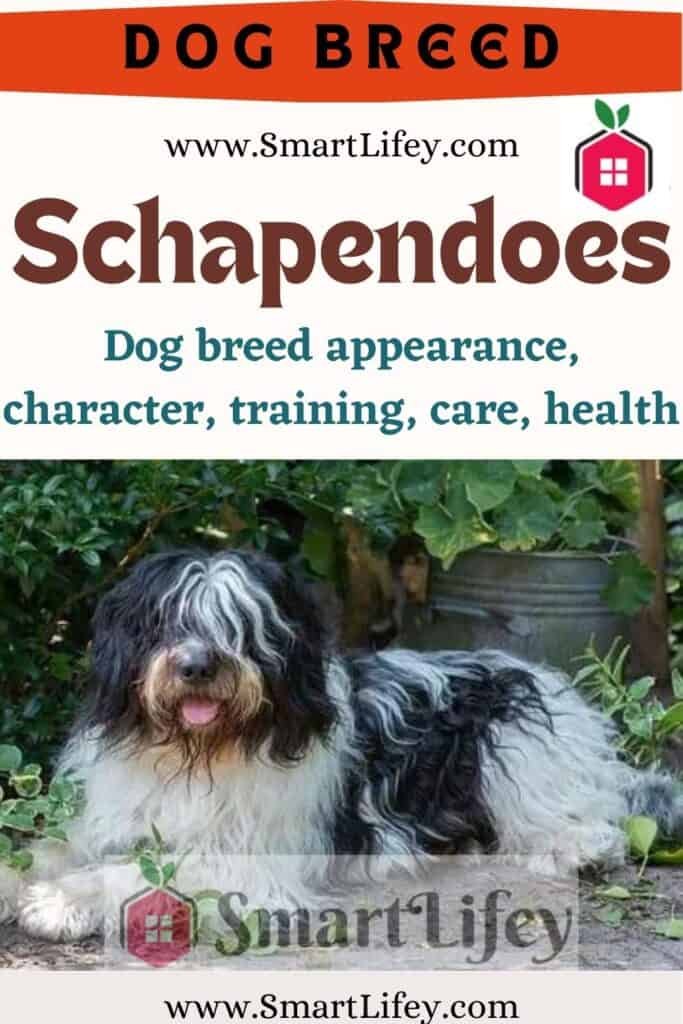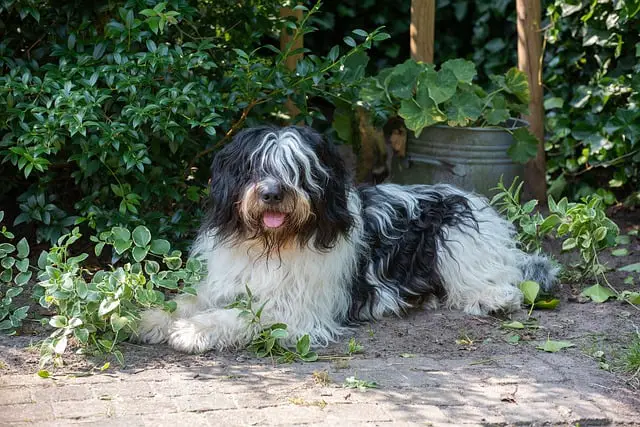
The Schapendoes is a traditional Dutch herding dog. It is characterized by being constant, agile, fast and strong. Endowed with great intelligence and a very sociable and lively character, it has known how to adapt to modern life. It develops great loyalty and affection towards the people it meets. Petlifey, we explain the temperament and characteristics of the Schapendoes dog breed.
Character of the Schapendoes breed
The shapendoes dog has an alert and spirited character. In addition, it is intelligent, cheerful, lively, kind, vigilant and with a strong temperament. Develop a behaviour of great fidelity and affection towards people you know.
The schapendoes is a dog that is always alert, spirited, vigilant and possesses a lot of temperament. The roles in which he stands out the most are herding, his traditional activity, and simple company.
- Temperament: Tireless, agile and intelligent, it is very cheerful and playful. He is vigilant and courageous.
- Energy: High level. It is a very active dog that needs to exercise daily to achieve a good physical and mental balance. Its movements are springy and agile, and it is an exceptional jumper.
- Adaptability: Medium / high. You can live both in the country and in the city, but preferably in a house with a garden.
- Sociability: Medium / high. It likes to live with the family, although it needs an authoritarian master, as it usually acts independently. Develop great loyalty and affection towards acquaintances.
- Health: Very good. The breed hardly suffers from any hereditary diseases.
- Longevity: High. It can live more than 12 years if it is well cared for.
- Utility: Versatile. It usually works mainly as a shepherd and companion dog, but it also competes successfully in sports such as agility or flyball .
Can you live in an apartment?
Due to its fundamental work as a vigilant shepherd of the flock, the schapendoes are accustomed to open spaces, where they can move freely, crossing the land and controlling everything that happens.
Although it can live in an apartment or in a city, the owners of a specimen of this breed must take into account this need of their pet and ensure their daily exercise and outdoor recreation session.
In general, the adaptability of this breed is quite good, it can live without problems in a house with a garden, and even in an apartment in the city, although it should be taken into account that its energy level is high.
That is why it is necessary to guarantee the possibility of exercising daily, to contribute to their correct development and physical and mental balance. In this way you will have a happy, dynamic and cheerful animal for many years.
Is it a good family dog?
Little known outside the Netherlands, the schapendoes are gradually gaining followers, as they have proven to be an excellent herding dog and a faithful companion, active, friendly, affectionate and very attentive to all members of their family.
It also gets along well with all kinds of pets and other dogs if it gets used to it since it is a puppy. In addition, due to its size and ease of handling, it is an ideal dog to live with as a family.
Is it a suitable dog for first timers?
Specimens of the Shapendo breed can be very stubborn and show a certain tendency to act on their own, quite independently, therefore, they need to have a master with authority, capable of imposing his criteria in a blunt but fair way.
If not, it is possible that the schapendoes invades the owner’s own land and it ends up finding a dog at home that does not pay them the slightest attention.
However, all this does not mean that it is not a suitable dog for novice owners, those who have never had a dog, since, otherwise, with a bit of well-exercised authority, it is an animal with which it is very easy to live with.
Characteristics of the Shapendoes dog
The general appearance of the Shapendoes dog breed is characterized by having a medium-sized body. Its constitution is light and quite square, which gives the appearance of being more voluminous because it is covered with abundant hair.
How is the Shapendoes race physically?
Head
Its head is quite wide compared to its length, but it gives the impression of being even larger due to the fact that it is well covered with hair. He has an impressive pompadour.
The eyes are set rather to the side , they are quite large and round, brown in color and with an open, loyal and lively expression. They are usually covered by hair.
Has the ears inserted at the top, are medium and fall freely, not too close to the head. Well covered with hair, they have a great capacity for movement.
Body
Males reach a good size. The height at the withers is about 46 cm, while the females are about 43 cm.
Their feet are quite large and elastic, they are wide and oval, with the toes close together and the pads thick and elastic. Sometimes they have dewclaws.
The tail is long and well covered with hair. The dog finds it very useful when jumping. When it gallops it carries it horizontally, if it jogs it lifts it up a lot, and at rest he lets it fall freely.
As the schapendoes prefer to gallop to trot during work, their movement is light, agile and elastic, without an excessive waste of energy. It is an excellent jumper and knows how to turn quickly
Fur
The hair of the shapendoes is thick and with sufficient undercoat, it is fine and dry, not very silky, slightly wavy and very dense. Quite long, especially in the region of the hind limbs.
It has a tendency to cordon off in areas where it is longer, which is why the animal reaches a large volume. This dog is characterized by having an impressive forelock , as well as a beard and mustache .
The coat can be of any color, but the specimens with cloaks ranging from greyish-blue to black stand out.
In its puppy stage, the schapendoes have not yet developed its characteristic long and wavy coat, especially on the head, where it will form a voluminous and showy pompadour that will give it a larger appearance.
Schapendoes breed standard
- Origin: Holland.
- General appearance: The Dutch schapendoes is a long-haired dog with a light and very harmonious structure.
- Utilization: Grazing and guarding.
- Other names : Dutch Schapendoes / Schapendoes néerlandais / Niederlándischer Schapendoes / Nederlandse Schapendoes.
- Size and size: Medium / Large.
- Height at the withers: 43-50 cm (Males) and 40-47 cm (Females).
- General appearance: It is a long-haired dog with a light and very harmonious structure.
- Weight: 12-18 kg (Males) and 10-15 kg (Females).
- Head: Its abundant fur gives the impression that the head is larger and above all wider than it really is. The skull also appears deeper.
- Skull: It is almost flat, with a moderate frontal furrow and very prominent superciliary arches. The skull is quite broad compared to its length.
- Nose-frontal depression (stop): Remarkably developed, not steep
- Muzzle: It is shorter than the distance between the stop and the occiput and narrows a little towards the end, but it is somewhat rounded. The lower jaw is clearly visible.
- Nose: Usually black.
- Jaws: The bite is scissor.
- Eyes: They are quite large, round and set slightly to the sides of the head. They are dark, brown, without reaching black, with a very characteristic expression of this breed.
- Ears: Set quite high, they are not large or fleshy and are covered with a long fur. They hang freely, but not very close to the head.
- Neck: It is strong and thin.
- Body: It is a little longer than it is tall and its skeleton is light, flexible and elastic.
- Back: It is slightly arched over the region of the loin, which has strong musculature.
- Chest: It is deep, with the ribs rather arched and extending well back.
- Tail: It is long and well covered with hair. At rest it hangs very low, but at trot the dog carries it quite high, oscillating noticeably from side to side and forming a curve; when he gallops he carries it horizontally, and on alert he usually carries it very raised. He helps her to direct the jump.
- Forelimbs: They are straight and slightly structured. Being well angulated, they highlight the sill.
- Forearms and arms: They are strong and elastic.
- Hind limbs: They are well muscled and moderately angled.
- Feet: With a wide and oval shape, they are quite large and elastic, and have thick, elastic pads with abundant hair between them. The fingers are close together and sometimes have dewclaws.
- Hair: Thick, fine, dry and long, it has abundant undercoat. It is not smooth, but rather wavy, and where it is longer it tends to cordon off, reaching a large volume.
- Color: The coat is usually bluish gray with a tendency to black.
- FCI Classification : FCI No. 313. GROUP 1 – Sheepdogs and Cattle Dogs (except Swiss Cattle Dogs). Section 1 – Sheepdogs.
The schapendoes is a very versatile animal that can perform a wide variety of jobs beyond traditional herding.
For example, its agile and flexible movements and its extraordinary ability to jump, which it directs with its tail, are characteristic of this breed, which is why this animal has found great followers among practitioners of sports disciplines such as agility or flyball .
Schapendoes health and diseases
As with many working breeds that have not made the leap to becoming popular and widespread companion dogs, the schapendoes have iron health and no major inherited diseases, ensuring that they can live longer than twelve years. in perfect condition.
To keep their health under control, it is enough to carry out a routine veterinary follow-up in which the pertinent vaccination and deworming programs are completed , which are established according to the place and lifestyle that the animal leads.
The vet should also periodically examine the eyes and ears of this long-haired, lop-eared breed, perhaps its only weak points. You also have to take care of your oral health, as dental problems can cause important secondary conditions.
Feeding of the Schapendoes breed
The best preventive health advice for this breed is to maintain a perfect balance between its diet and the exercise it performs. In this way, a balanced development of the animal is guaranteed, both physically and psychologically, and obesity is avoided, which would have a negative impact on the appearance of joint degenerations as age advances.
Nowadays, it is easy to find a suitable diet on the market adapted to the racial conditions and lifestyle of this breed, since it manages to guarantee the energy levels necessary for its daily activity without compromising its health and well-being.
Hygiene and care of the Schapendoes

Regarding hygiene practices, given that the schapendoes coat is abundant, long, double and of fine and dry texture, with a tendency to knot, it needs regular brushing .
To do this, the ideal is to use a rake when working the inner layer, and a card and a metal comb when the covering layer is approached.
It is always brushed from the inside out and in the same direction as the hairline. Like this one it is slightly wavy and very tight.
The baths must only be carried out when the dog is very dirty and taking care not to alter its natural texture, as it is advisable to maintain the characteristic rusticity of its coat.
